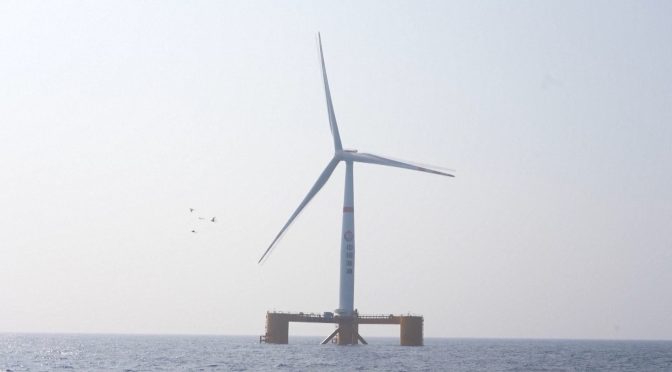California has set a goal to generate 25 gigawatts of offshore wind power by 2045, enough to supply 25 million homes. However, experts argue that the state should aim even higher to combat climate change, strengthen the electric grid, and boost the economy. Research conducted by Energy Innovation, GridLab, and UC Berkeley suggests that with smart state and federal policies, California could install over 100 gigawatts of offshore wind farms along the West Coast by 2050. The cost of electricity from offshore wind turbines would be comparable to onshore wind turbines and solar farms.
Currently, offshore wind technology is flourishing globally, with China leading the way by already installing 25 gigawatts and aiming for 180 gigawatts by 2035. In contrast, the U.S. is just beginning to install its first commercial-scale projects in the Atlantic, with a goal of producing 30 gigawatts by 2030. To fully realize the economic potential of offshore wind, the U.S. should aim for 400-500 gigawatts by 2050, with California at the forefront of the West Coast efforts. Embracing offshore wind not only helps combat climate change but also creates job opportunities. Clean energy jobs grew faster than overall job growth in 2022, and offshore wind development along the West Coast by 2050 could generate 60,000 additional jobs compared to a clean-energy strategy without offshore wind.
Concerns about the visible impact of offshore wind turbines have been addressed through careful planning. Recent polling shows strong support from coastal residents for offshore wind projects. Many project sites are situated far enough from the shore to have minimal impact on views. For example, the Vineyard Wind project off the coast of Massachusetts is being built 15 miles offshore. Similarly, the identified lease areas in Oregon and California are located at least 13.8 miles and 20 miles offshore, respectively. The deep ocean along the West Coast would require the use of floating turbines, which would be placed as far as 100 miles out at sea.
Investing in offshore wind could revitalize port communities and establish a new industry in California. The state’s port infrastructure could be utilized for manufacturing, building, and installing specialized offshore wind projects, creating opportunities for export to other nations. Moreover, offshore wind power can help maintain a stable electricity supply during heatwaves and high-demand periods when solar generation decreases. The transmission lines connecting offshore wind to the grid would also be more resilient to wildfires than land-based power lines.
While offshore wind farms bring environmental benefits by reducing emissions and avoiding the development of sensitive habitats, it is essential to consider and mitigate their impact. Strategies such as speed limits and construction timeline restrictions have been implemented on the East Coast to protect marine wildlife during wind farm construction. Collaborative efforts between offshore wind developers and fisheries have been successful in ensuring coexistence.
However, time is of the essence. The standard timeline for offshore wind farm development is approximately 14 years. Delaying investment in offshore wind would jeopardize California’s climate goals. It is crucial for Governor Gavin Newsom, the state Legislature, and the California Energy Commission to set higher offshore wind targets for 2050. Additionally, infrastructure managers in California should coordinate with counterparts in Oregon and Washington to plan power line projects that support offshore wind. Directing funding towards port investments and workforce training programs would further accelerate progress. California has been a leader in clean energy and climate solutions, but it is time to catch up with Europe and China in offshore wind development to reap the economic and climate benefits sooner.


